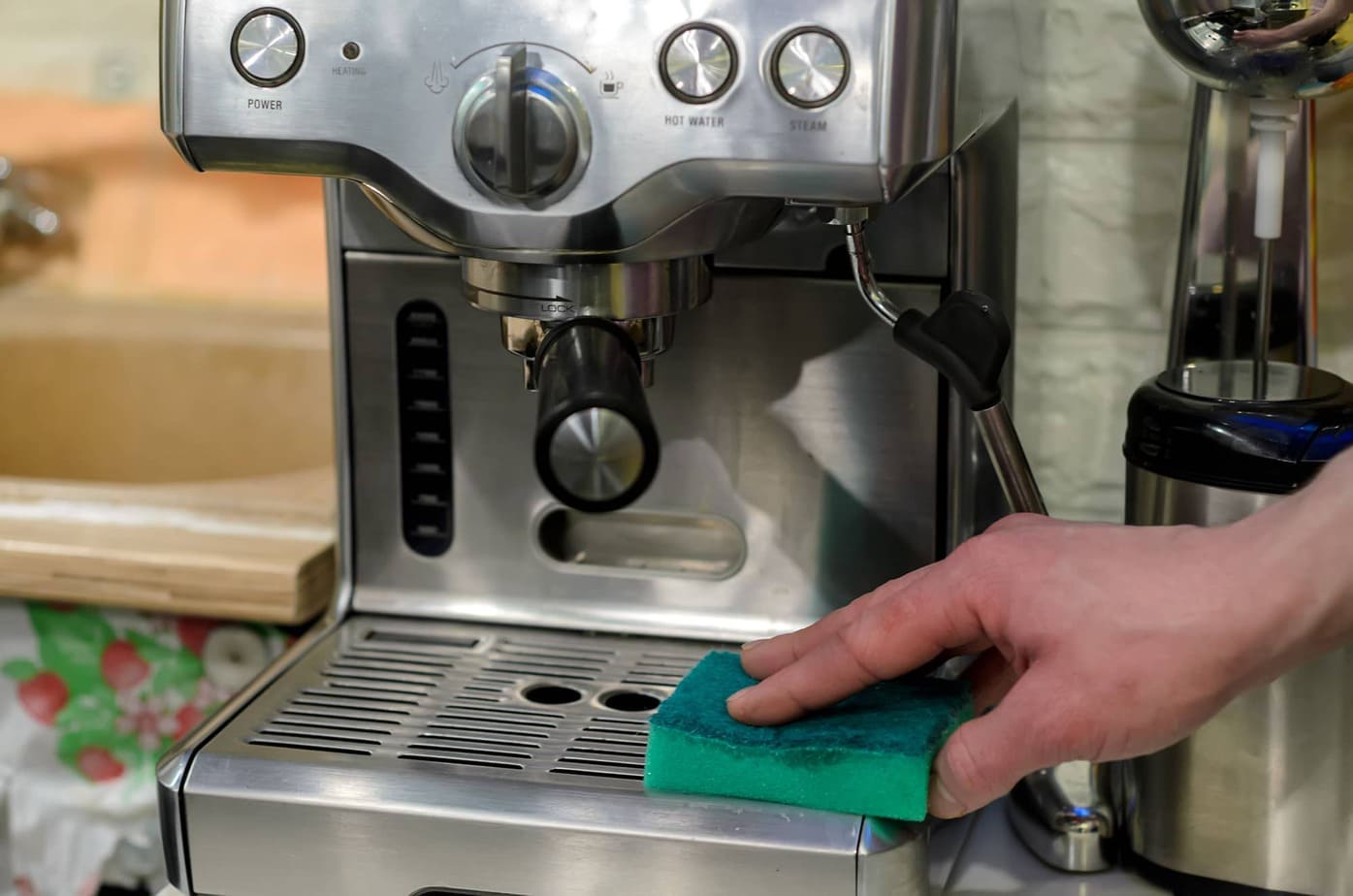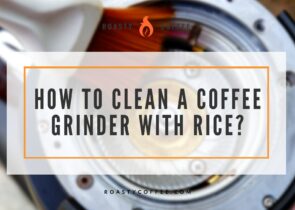If you’re like most coffee lovers, you probably dread cleaning your coffee maker. It’s a tedious task, and it always seems to take forever. But keeping your coffee machine clean is necessary if you want to keep your machine in good condition and continue to make delicious coffee.
Many people use vinegar to clean their dirty coffee maker and remove stubborn stains from the coffee carafe, but other methods work just as well – and sometimes even better!
So, let’s discuss some of these coffee maker cleaning methods and why they might be a better choice for you. We will also talk about the benefits of not using vinegar to clean your coffee maker. Whether you’re looking for a method that has a less pungent smell or one that doesn’t have any harsh chemicals, here are some great alternative ways to clean your coffee maker.

Is vinegar a good coffee machine cleaner?
Yes, vinegar is a good cleaning product for coffee makers. One of the primary components of vinegar is acetic acid, with trace amounts of other chemicals. Acetic acid is a weak acid in chemical terms, but it’s powerful enough to dissolve mold and germs while breaking down deposits of minerals and residue on surfaces.
Since this acid is the main component in vinegar, it makes vinegar a great choice for cleaning coffee makers. It is a natural cleaning agent and common disinfectant and will kill any mold or bacteria that may be growing in your coffee maker. Vinegar is also very affordable and easy to find.
Use white vinegar or apple cider vinegar in a pinch. The combination of vinegar and water will create a diluted solution that you can use to clean your coffee maker effectively. Don’t use balsamic vinegar. That will only leave other messes to clean up.
However, there are a few downsides to using vinegar. Vinegar can leave behind a rather pungent odor, and it can also damage the finish on your coffee maker and affect the taste of coffee. If you’re looking for a more gentle cleaning solution, there are a few alternatives that you can try.
Why should you clean a coffee maker without vinegar?
There are several reasons why you should clean your automatic coffee maker without vinegar. The first reason is that vinegar can leave behind an unpleasant smell. If you’re using your coffee maker to make coffee for guests, they may not appreciate the strong smell of vinegar lingering in the machine. Another reason to avoid using vinegar is that it can damage the finish on your coffee maker.
Four ways to clean a coffee maker without vinegar
So, what are some of the other ways that you can clean your coffee maker without vinegar? Here are four cleaning methods that you can try.
Baking Soda
Baking soda is an excellent substitute for vinegar in cleaning coffee makers. Baking soda is also a natural disinfectant that is affordable, easy to find, and much easier to clean out of your machine than vinegar.
Here’s how to clean your drip coffee maker with a baking soda solution:
What you’ll need
Baking soda and lukewarm water.
Step one – Combine one cup of clean water with a quarter cup of baking soda in a mixing bowl.
Step two – Pour the solution into the water reservoir of your coffee machine.
Step three – Without adding any coffee to the machine, run between three and five brewing cycles.
Step four – Once the brewing cycle is finished, rinse the coffee pot and wash it with dish soap and warm water.
Lemons
Lemons are another great alternative to vinegar for cleaning coffee makers. Like vinegar, lemons are naturally acidic, and the citric acid helps break down leftover coffee oil and residue.
If you’ve ever eaten sour candies, the white powder that coats them and gives that face-puckering kick is citric acid.
Lemons also have antibacterial properties, which will help kill any nasty bacteria that may be growing in your machine; another benefit of cleaning your coffee maker with lemon juice.
Here’s how to clean your coffee maker with a lemon solution:
What you’ll need
Lemons, water.
Step one – Cut two lemons in half and squeeze the juice into a small bowl.
Step two – Make a solution of lemon juice (the citric acid) and water by mixing one part straight lemon juice and one part water. Remember to pour acid into water, and never introduce water into acid. The wrong combination can create a reaction you really don’t want. You may increase the concentration of the juice, but it isn’t necessary.
Step three – Fill the coffee machine water reservoir with fresh water and add the lemon juice mixture.
Step four – Turn on your coffee maker and let it run its full cleaning cycle. Once again, we recommend running it for between three and five cycles for maximum effect. You can check the water after each brew cycle to see if you can still taste the lemon – if not, there’s no need to keep running the cycles.
Step five – Once the cycle is finished, use a clean cloth to wipe down all of the surfaces.
Cream of Tartar
The next method for cleaning coffee makers without vinegar is by using cream of tartar. Cream of tartar is a powdered form of tartaric acid found in most grocery stores. It’s made from the sediment left behind after wine has been made, and it has natural antibacterial properties.
Here’s how to clean your coffee maker with cream of tartar:
What you’ll need
Cream of tartar, water.
Step one – Fill your coffee machine’s water reservoir with water.
Step two – Put three tablespoons of cream of tartar in the reservoir.
Step three – Ensure the solution is fully dissolved in the water.
Step four – Run the coffee maker for its full cycle, between three and five times.
Step five – Rinse the coffee pot with soapy water after each brew cycle.
Hydrogen Peroxide
Another relatively affordable option for cleaning coffee makers without vinegar is a cup of hydrogen peroxide. The disinfecting properties of hydrogen peroxide make it a natural sanitizer and can be used to kill mold, bacteria, and fungus. It’s also non-toxic, which makes it a good choice since, of course, you want to be able to drink safely out of your coffee maker after cleaning it.
Here’s how to clean your coffee maker with hydrogen peroxide:
What you’ll need
Hydrogen peroxide solution, water.
Step one – To get rid of residue from prior brews, simply run a complete cycle with only water before running the chemical through the machine.
Step two – Add one cup of the solution to the water reservoir.
Step three – Fill the reservoir to the brim with regular water.
Step four – Run the coffee maker on its full cycle.
Step five – Rinse the coffee pot with water and soap to ensure the chemical doesn’t linger.
Frequently asked questions
How do you clean a coffee maker naturally?
There are a few different ways to clean a coffee maker naturally. You can use vinegar, lemons, hydrogen peroxide, or cream of tartar. Each of these options has its own set of benefits and drawbacks.
How do you get rid of the vinegar smell after cleaning your coffee maker?
If you’re cleaning your coffee maker with vinegar, there’s a good chance you’ll be left with a vinegar smell after cleaning. This smell can be eliminated by running a cycle with water and lemon juice, or it will simply dissipate over time with plenty of use.
How often should you clean your coffee maker?
You should do a regular cleaning of your coffee maker every three to six months, depending on how often you use it. The accumulation of coffee residue and mineral deposits can affect the coffee machine performance and cause havoc, affecting the quality of your cup of coffee and causing your brewer to malfunction.
Cleaning your coffee maker is an important part of keeping it in good working condition. By taking the time to clean it regularly, you’ll be able to extend its lifespan and enjoy better-tasting coffee for years to come.
Happy Caffeinating







